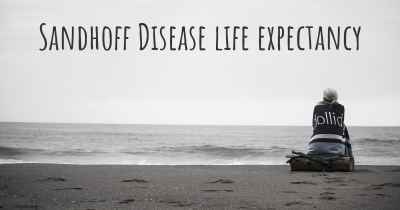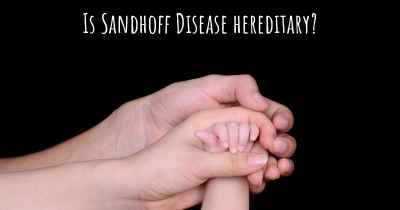Living with Sandhoff Disease. How to live with Sandhoff Disease?
Can you be happy living with Sandhoff Disease? What do you have to do to be happy with Sandhoff Disease? Living with Sandhoff Disease can be difficult, but you have to fight to try to be happy. Have a look at things that other people have done to be happy with Sandhoff Disease

Living with Sandhoff Disease
Sandhoff Disease is a rare genetic disorder that affects the central nervous system. It is a form of lysosomal storage disease characterized by the body's inability to break down certain fats called gangliosides. This leads to the accumulation of these fats in the brain and spinal cord, causing progressive damage and a wide range of symptoms.
Managing Symptoms
Living with Sandhoff Disease can be challenging, but there are ways to manage the symptoms and improve quality of life:
- Regular medical care: It is crucial to have a dedicated medical team that specializes in Sandhoff Disease. They can monitor your condition, provide appropriate treatments, and offer support.
- Physical therapy: Engaging in regular physical therapy can help maintain muscle strength and flexibility. Therapists can design exercises and activities tailored to your abilities and needs.
- Occupational therapy: Occupational therapists can assist in developing strategies to enhance daily living skills, such as dressing, eating, and communication. They can also recommend assistive devices to improve independence.
- Speech therapy: Speech therapists can help individuals with Sandhoff Disease improve their communication skills, swallowing abilities, and overall oral motor function.
- Nutritional support: A well-balanced diet is essential for individuals with Sandhoff Disease. Consult with a registered dietitian to ensure proper nutrition and address any specific dietary needs.
- Respiratory care: As the disease progresses, respiratory complications may arise. Regular monitoring of lung function and appropriate interventions, such as respiratory therapy or the use of assistive devices, can help manage breathing difficulties.
- Pain management: Sandhoff Disease can cause pain and discomfort. Working closely with healthcare professionals to develop a pain management plan can help alleviate symptoms and improve overall well-being.
Emotional and Social Support
Living with Sandhoff Disease not only affects the individual but also their family and caregivers. It is important to seek emotional and social support to cope with the challenges:
- Support groups: Connecting with others who are going through similar experiences can provide a sense of belonging and understanding. Joining support groups, either in person or online, can offer valuable emotional support and a platform to share experiences and advice.
- Counseling: Individual or family counseling can help navigate the emotional impact of Sandhoff Disease. Professional counselors can provide coping strategies, address grief and loss, and assist in making difficult decisions.
- Respite care: Caregivers play a vital role in the lives of individuals with Sandhoff Disease. Taking breaks and seeking respite care services can help prevent burnout and ensure the well-being of both the individual and their caregivers.
- Education and advocacy: Learning about Sandhoff Disease and becoming an advocate can empower individuals and their families. By raising awareness, advocating for research, and supporting organizations dedicated to rare diseases, you can contribute to the overall understanding and management of Sandhoff Disease.
Planning for the Future
Sandhoff Disease is a progressive disorder, and it is important to plan for the future:
- Advance care planning: Discussing and documenting your wishes for medical care, end-of-life decisions, and other important matters with your healthcare team and loved ones is crucial. This ensures that your preferences are respected and followed.
- Financial planning: Sandhoff Disease can place a significant financial burden on individuals and families. Exploring financial assistance programs, insurance options, and creating a long-term financial plan can help alleviate some of the stress associated with the disease.
- Legal considerations: Consulting with an attorney who specializes in disability law can help navigate legal matters, such as guardianship, estate planning, and accessing government benefits.
Living with Sandhoff Disease presents unique challenges, but with proper medical care, support, and planning, individuals can lead fulfilling lives. It is important to focus on maximizing quality of life, embracing support networks, and advocating for research and awareness.
Posted Feb 24, 2017 by Levi Christopher Lucero, Jr. 2185
Posted May 11, 2017 by Mara 700








